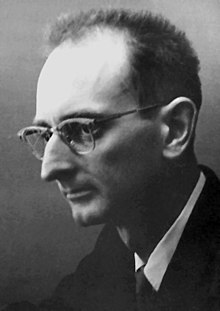Owen Chamberlain
| Owen Chamberlain | |
|---|---|
 |
|
| Born |
July 10, 1920 San Francisco, California, USA |
| Died | February 28, 2006 (aged 85) Berkeley, California, USA |
| Nationality | United States |
| Fields | Physics |
| Institutions | Los Alamos National Laboratory |
| Alma mater |
Dartmouth College University of California, Berkeley University of Chicago |
| Doctoral advisor | Enrico Fermi |
| Doctoral students | John Huth |
| Known for | Particle physics |
| Notable awards | Nobel Prize in Physics, 1959 |
Owen Chamberlain (July 10, 1920 – February 28, 2006) was an American physicist, and Nobel laureate in physics for his discovery, with collaborator Emilio Segrè, of the antiproton, a sub-atomic antiparticle.
Born in San Francisco, California, Chamberlain graduated from Germantown Friends School in Philadelphia in 1937. He studied physics at Dartmouth College, where he was a member of Theta Chi Fraternity, and at the University of California, Berkeley. He remained in school until the start of World War II, and joined the Manhattan Project in 1942, where he worked with Segrè, both at Berkeley and in Los Alamos, New Mexico. He married Beatrice Babette Copper (d. 1988) in 1943, with whom he had four children.
In 1946, after the war, Chamberlain continued with his doctoral studies at the University of Chicago under legendary physicist Enrico Fermi. Fermi acted as an important guide and mentor for Chamberlain, encouraging him to leave behind the more prestigious theoretical physics for experimental physics, for which Chamberlain had a particular aptitude. Chamberlain officially received his Ph.D. from the University of Chicago in 1949.
In 1948, having completed his experimental work, Chamberlain returned to Berkeley as a member of its faculty, where he, Segrè, and other physicists investigated proton-proton scattering. In 1955, a series of proton scattering experiments at Berkeley's Bevatron led to the discovery of the anti-proton, a particle exactly like a proton except negatively charged. Chamberlain's later research work included the time projection chamber (TPC), and work at the Stanford Linear Accelerator Center (SLAC).
...
Wikipedia
